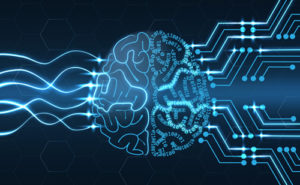A recent Northeastern University/Gallup poll found most Americans optimistic about artificial intelligence’s (AI) impact on their futures while, at the same time, expecting the net effect of AI to be an overall reduction in jobs. If we manage AI effectively, I believe it can be a net benefit to both society and the economy.
The question is: How will higher education manage AI?
Unfortunately, higher education does not have a reputation for managing change effectively. Our experience is much more one of coming late to the party—and not of our own accord. We cannot and should not do this with AI.
First, much of the expertise to develop AI is coming from university laboratories, with AI hot spots in university centers such as Boston, San Francisco, Chicago, and the Research Triangle of North Carolina. If we can develop AI for businesses at home and abroad, why can’t we do the same for ourselves?
Second, many creative applications of AI have already been developed to solve problems within the university. Certainly, enrollment-management processes as well as today’s learning management systems look nothing like those of 20 years ago. These changes are clear applications of AI.
At the end of the day, however, the application of AI within the university is quite limited.
Where are the higher-ed AI opportunities?
To find opportunities for AI growth within the university, we need to distinguish between activities that are uniquely human as opposed to those that can be computerized. Individuals excel at defining problems, distinguishing between “good” and “bad,” at idiosyncratic tasks such as detecting false positives, and in developing novel combinations not anticipated by previous experience. Computers excel at tasks that involve well-understood rules and procedures.
(Next page: Where AI can make its mark in higher ed)
Furthermore, human decision making is enhanced when it occurs in groups. Social facilitation, cooperation, division of labor, and the collecting of different perspectives, knowledge, and experience all combine to enhance decision making by groups.
Of course, neither individuals nor groups are without their problems. Individuals can be slow and inefficient in their decision making, to say nothing of the limits a single individual’s knowledge and experience. Likewise, groups can be guilty of premature closure, becoming too risky or too conservative because of preconceived expectations and groupthink. Much of the work of organizational psychology has focused on how to manage individual and group decision making so as to keep the good and minimize the bad.
Thus, if AI is seen not as a way to replace the individual but as a way to make individuals and groups more effective, both the impact of AI and its acceptance will be greatly improved. Today, augmented reality has greater potential for changing how we do things in higher education. Interesting examples of this concept can be found in the business world, where AI is used to facilitate human fraud detectors for banks and human translators and editors in publishing.
How can this distinction yield applications within higher education?
While MOOCs have not yielded the disruptions that many expected, they have had a significant impact on the way we deliver course materials. Lectures on most introductory topics are readily available on the web and the push for flipped classrooms is ubiquitous. These applications facilitate what individual instructors do.
Where AI can make its mark
The real impact on learning, however, can come through learning management systems (LMSs). We have known for quite a while that we can use technology to manage classroom participation. There is much research, including my own, that shows that anonymous input systems, when added to regular or online classrooms, increase the participation of individuals who would normally shy away from raising their hands or volunteering comments.
Applications are being developed to use AI to track student questions asked in a class and direct them to answers and to other students with the same questions. The Minerva Project is so convinced of the power of such technology that class discussions occur only online—despite students living together in the same building.
Furthermore, the massive amount of data generated by LMSs has the potential to increase the effectiveness of learning. Researchers at a school where I previously worked used data on students’ online participation to identify within the first two weeks of a class which students were likely to perform poorly. They were then able to change these students’ participation patterns and thus their outcomes.
Getting faculty buy in
The question, however, is whether such applications will be embraced by the faculty members who fear that change will result in their demise. And at their core, many faculty members believe that learning is a uniquely individual process. Until professors see AI as a means of enhancing their effectiveness, resistance will continue.
Disruptors are on the horizon. The entrance of Arizona State and Purdue into the online marketplace is significant. MBA programs are ripe for disruption; most business school deans expect the part-time MBA market to shift to online delivery in the next five years. These online platforms will accelerate the shift to AI-managed learning.
The future for AI within the university is bright. Applications will proliferate and finally disrupt the teaching paradigm. The danger is for institutions that come late to the party and not of their own accord.
- Using real-world tools to prepare students for the workforce - April 18, 2024
- 8 top trends in higher education to watch in 2024 - April 16, 2024
- Defining a path to equitable AI in higher education - April 12, 2024

